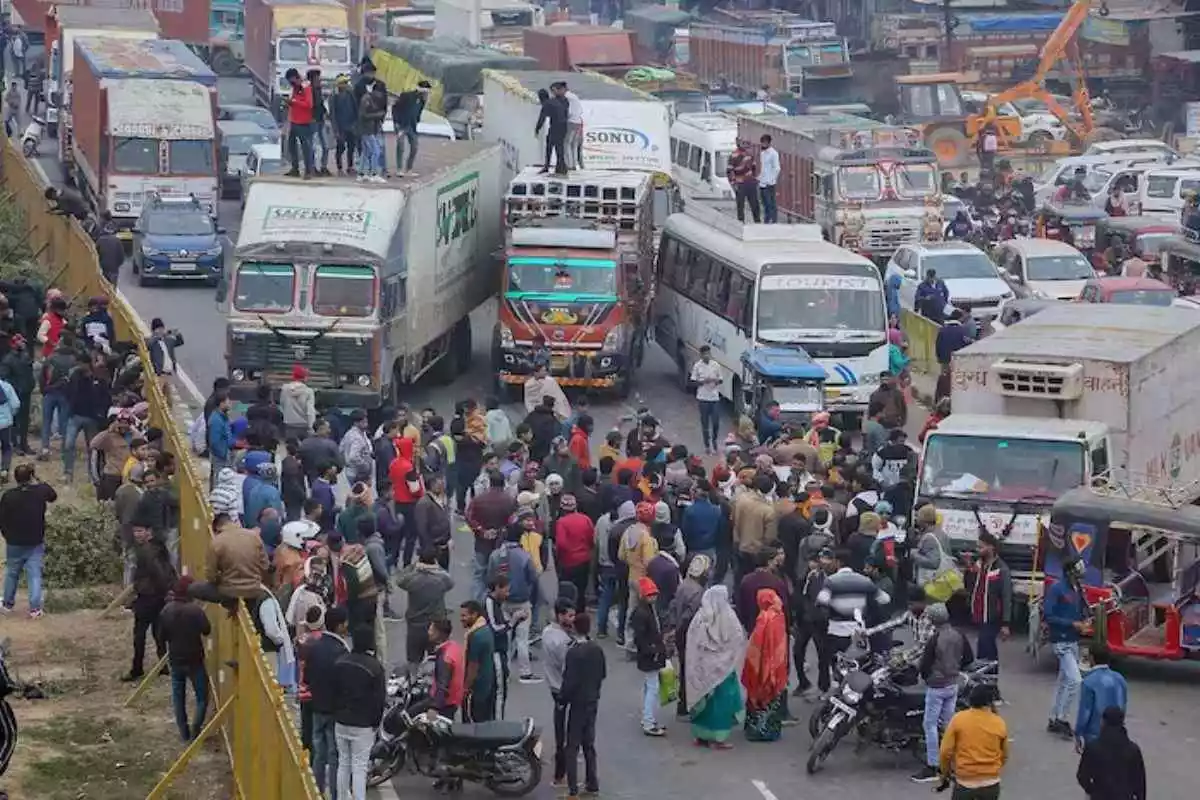
Truckers strike nationwide
New Delhi: The government has announced that it will consult stakeholders prior to enacting a controversial rule against hit and run, calling off the nationwide truckers’ strike. The All-India Motor Transport Congress decided to end the agitation after extensive negotiations with the administration.
“We had a discussion with All India Motor Transport Congress representatives… the government wants to say that the new rule has not been implemented yet. We all want to say that before implementing Bharatiya Nyaya Samhita 106/2, we will have a discussion with All India Motor Transport Congress representatives and then only we will take a decision,” Union Home Secretary Ajay Bhalla said this evening.
“The new laws have not been implemented. It will be implemented only after consultation with All India Transport Congress,” confirmed Bal Malkit, the chairman of the AIMTC’s core committee.
Bharatiya Nyaya Samhita replaces Indian Penal code
The Indian Penal Code from the colonial era was to be replaced by the Bharatiya Nyaya Samhita, or BNS, which has strict penalties for hit-and-run incidents. This is why there was outrage about Section 106(2) of the BNS. There was fear of an all-India truckers strike due to a shortage of fuel and other necessities.
Many states, including Jammu and Kashmir, Bihar, Punjab, Maharashtra, Madhya Pradesh, Himachal Pradesh, and Chhattisgarh, had witnessed the protests.
Also Read: PM to visit Kerala’s Thissur to join mass convention, Modi will address 2 lakh woman today
What is the hit-and-run rule?
The previous penalty for hit-and-run incidents was up to two years in jail and a lesser fine; under the new law, the maximum sentence is ten years in jail and a fine of ₹ 7 lakh. When someone causes death by reckless driving and leaves the scene without calling the police, they will be sentenced to a maximum of ten years in prison.
Drivers of commercial vehicles, such as cabbies and truckers, are wondering how they would afford to pay such a high charge in the event of an accident.
The potential for legal abuse, the procedure for alerting authorities due to the prospect of public outrage, and the type of proof that will be accepted in the event of a dispute are all concerns raised by experts.
To read more such news, download Bharat Express news apps


















